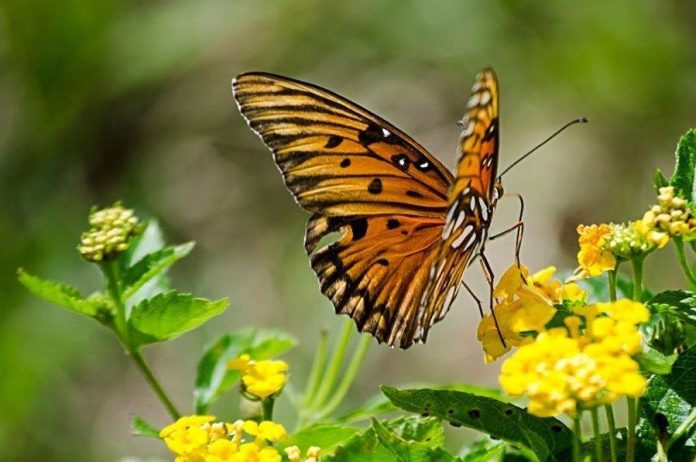By Linda Hay and Barbara Brown
Butterflies serve as plant pollinators and lovely, ephemeral visions as they pass through our landscape. To attract more butterflies to your yard, you can create a special garden with the floral nectar sources they need. Butterfly gardens attract and sustain butterflies, allowing them to complete their life cycle while also pollinating plants.
There are two types of plants required by butterflies: host plants where females lay eggs and the butterfly larvae feed and nectar-producing flowers that provide a vital food supply for adult butterflies.
Adult butterflies are attracted to red, yellow, orange, and pink blossoms. Molly Keck, AgriLife Extension entomologist, recommends the following flower varieties to attract butterflies to your yard: Pride of Barbados, Henry Duelberg salvia, Mystic Spires blue salvia, New Gold lantana, Butterfly deep pink pentas, zinnias, Turk’s cap and Gregg’s mistflower. Other flowering plants are Bee Balm, Purple Coneflower, and Butterfly weed.
When selecting plants for your butterfly garden, choose plants that bloom at different times of the year so that there is almost always something appealing to them. Choose native plants when possible, to match the needs of the butterflies that are found in our area. The Native Plant Society of Texas provides a list of native plants by ecoregion. To see their list for the North Central Texas ecoregion, go to NPSOT.org, select “Search for Plants.”
Be sure your garden provides a water source for the butterflies. It can be a shallow dish filled with coarse sand, a bit of manure, and a few flat stones for the butterflies to stand on.
The Elm Fork Chapter of the Texas Master Naturalists (txmn.org) is a great resource to help attract butterflies to your yard.
The butterfly population is declining by about 1.5% per year since 1977. Please do your part to help them survive.
Happy Gardening!















